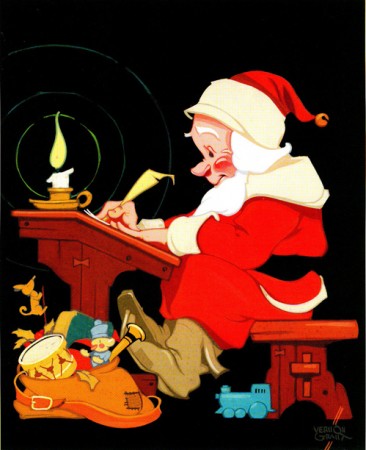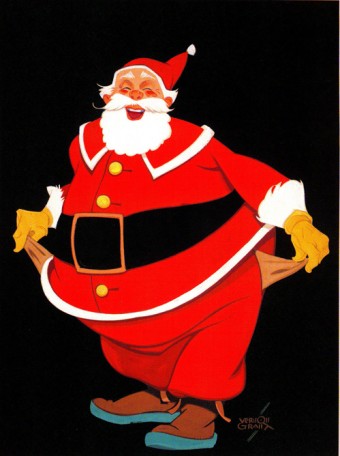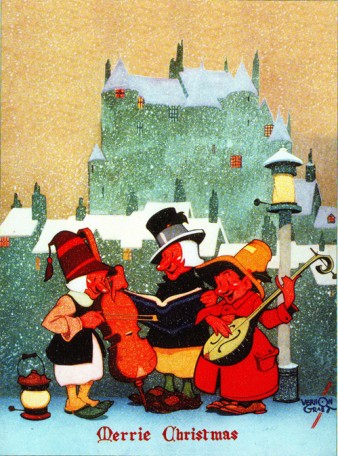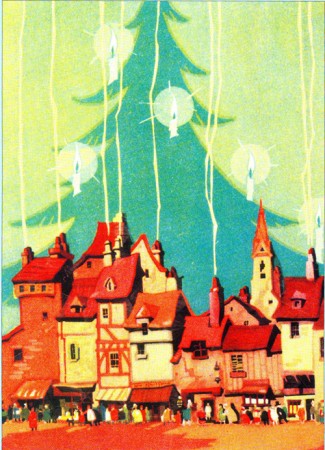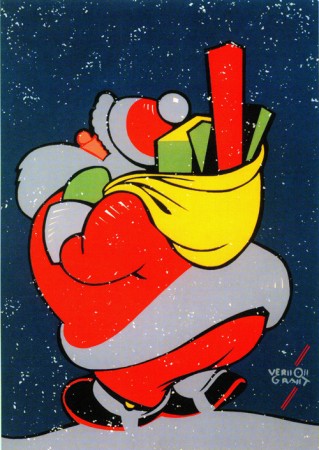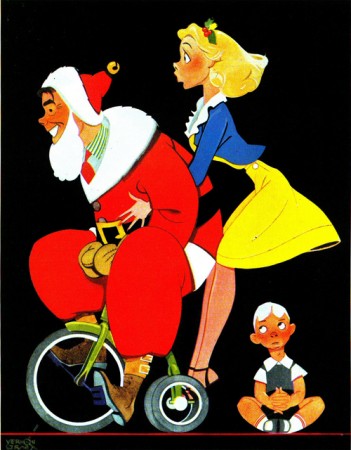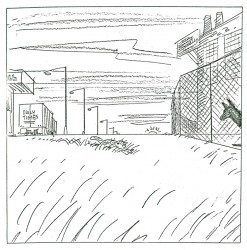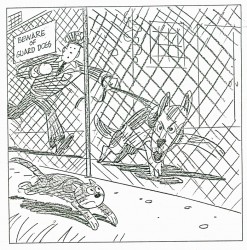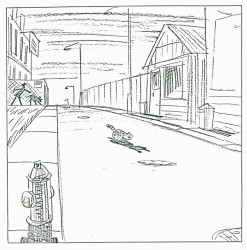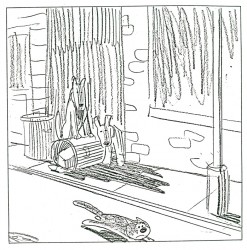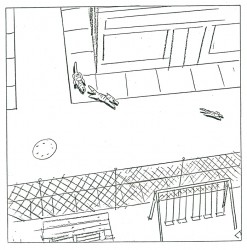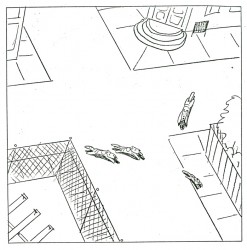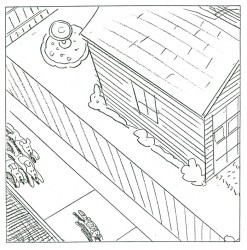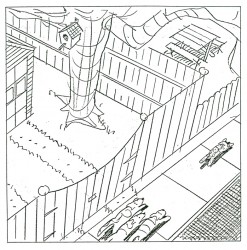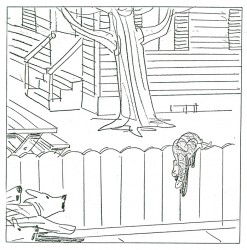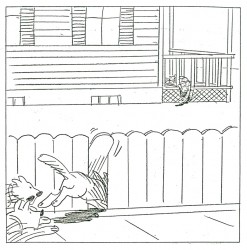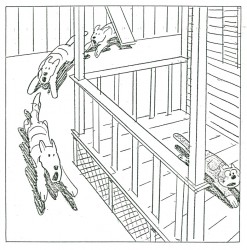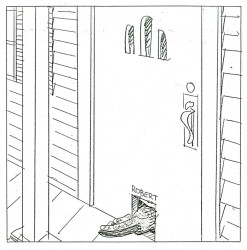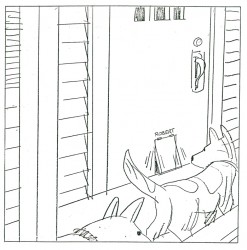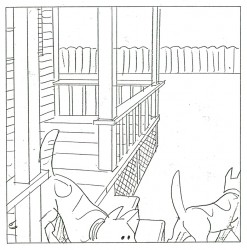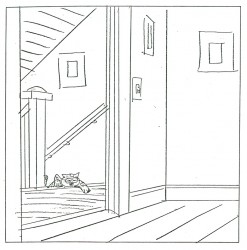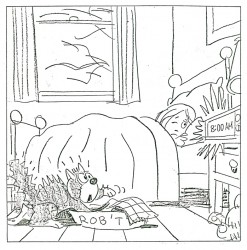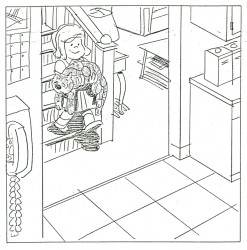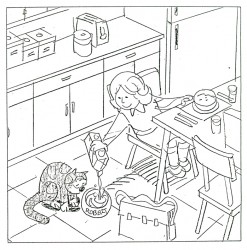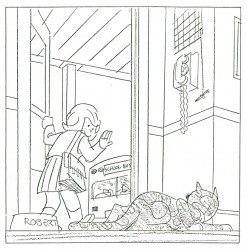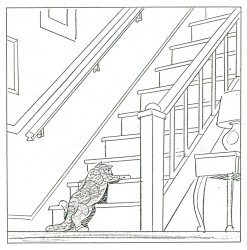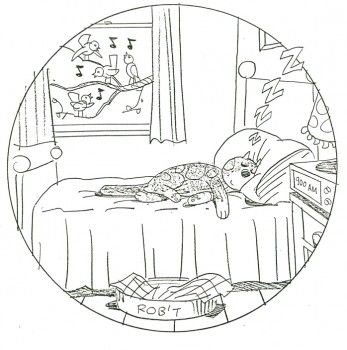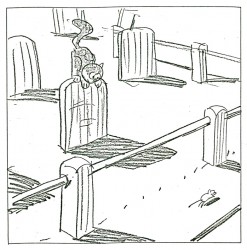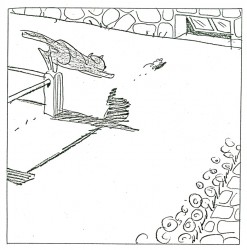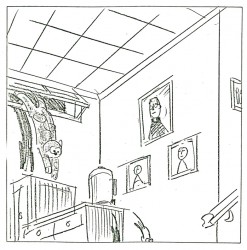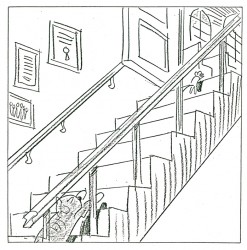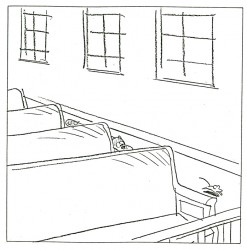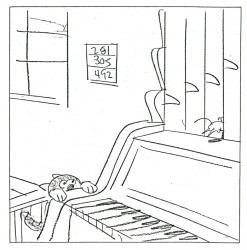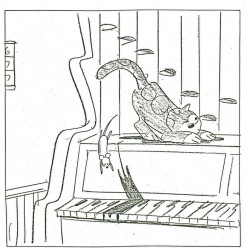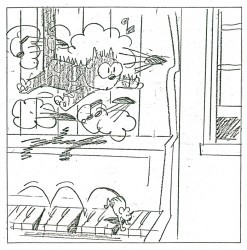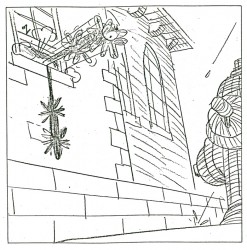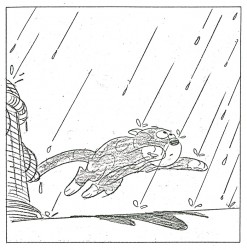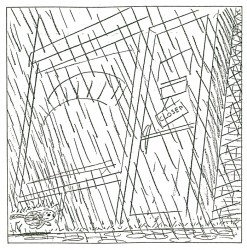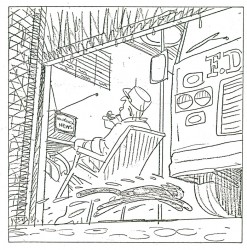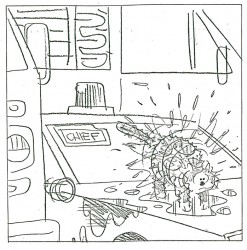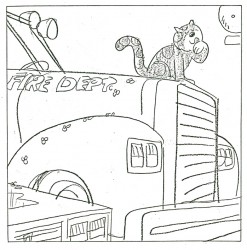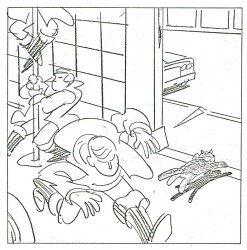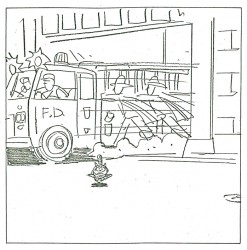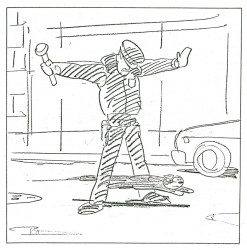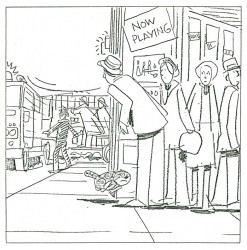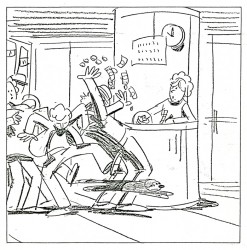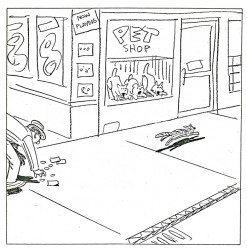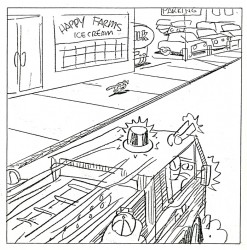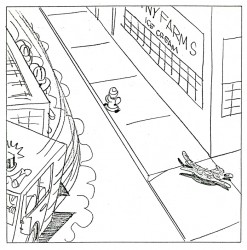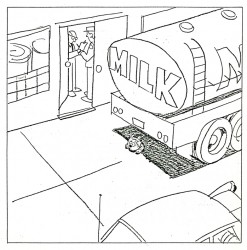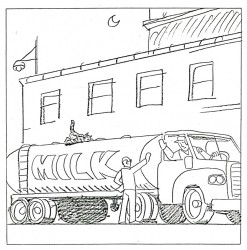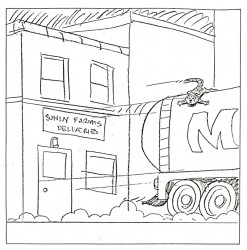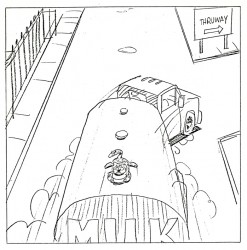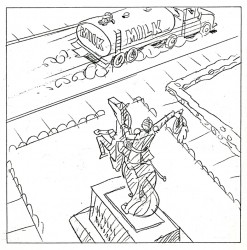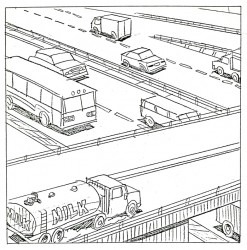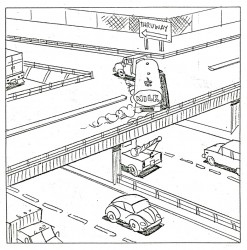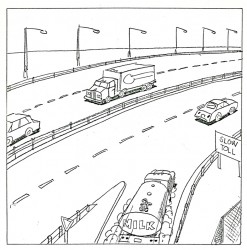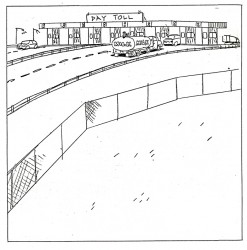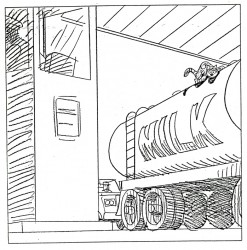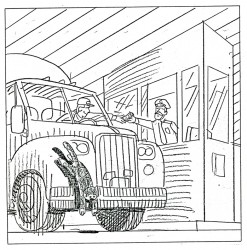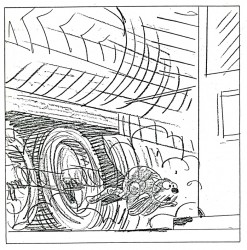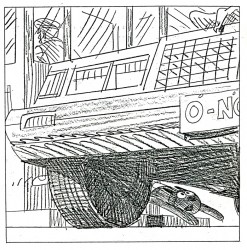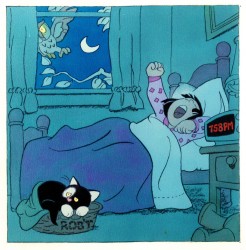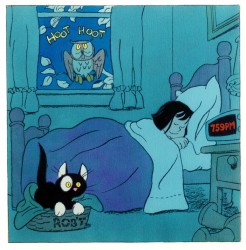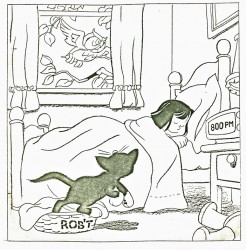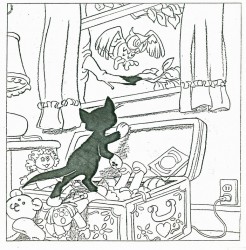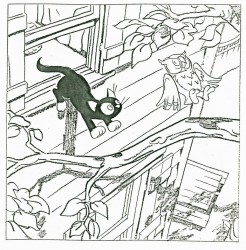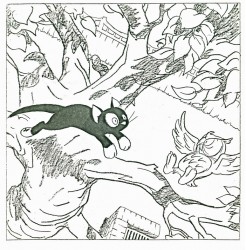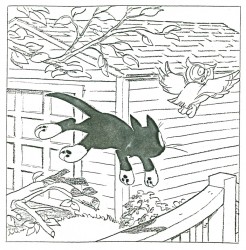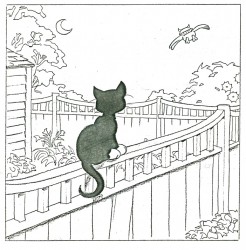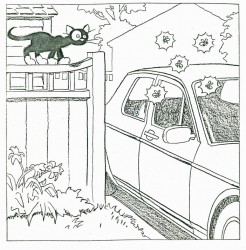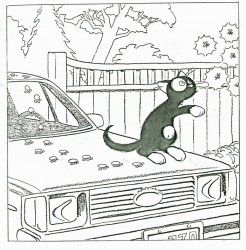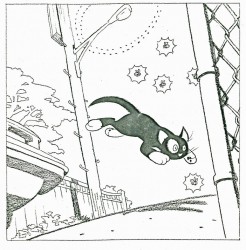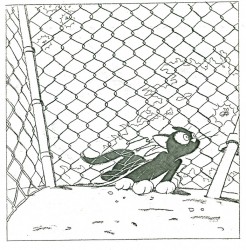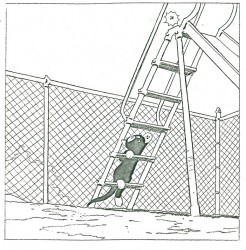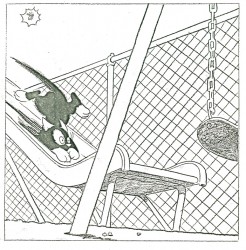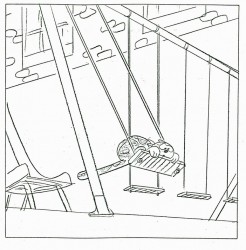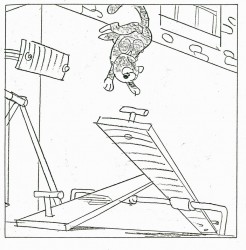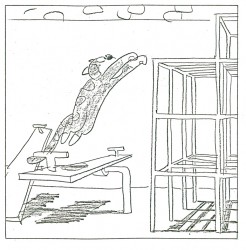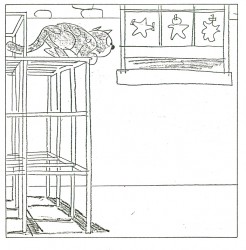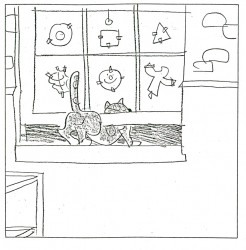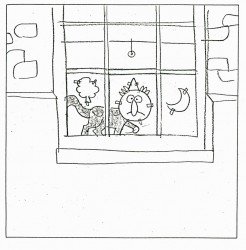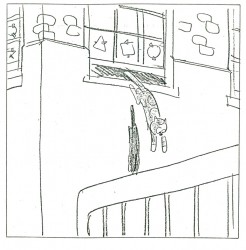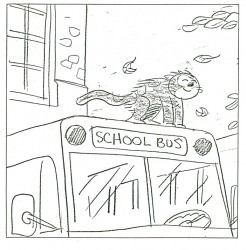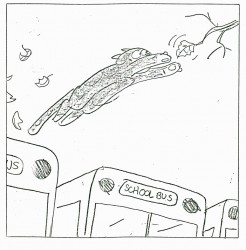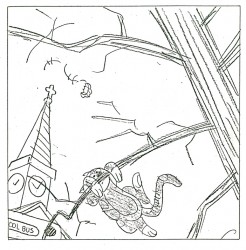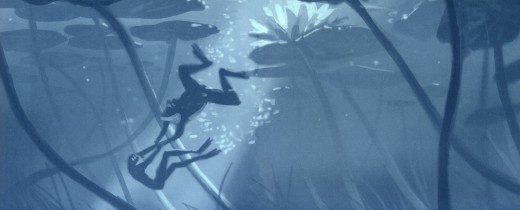Category ArchiveBooks
Books &Norshtein 26 Dec 2009 08:15 am
Norshtein comics – 6
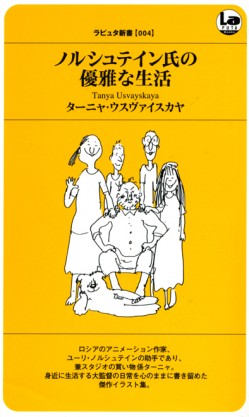 - This is the final chapter of the book I’ve been posting these last five weeks. It is a drawn diary kept by Tanya Usvayskaya while she worked for Yuri Norshtein‘s studio. The close-knit and personal relationship of all the members of the studio comes through, and we get to share some intimate moments with the animation master, Yurij Norshtein.
- This is the final chapter of the book I’ve been posting these last five weeks. It is a drawn diary kept by Tanya Usvayskaya while she worked for Yuri Norshtein‘s studio. The close-knit and personal relationship of all the members of the studio comes through, and we get to share some intimate moments with the animation master, Yurij Norshtein.
Richard O’connor, whose Asterisk Productions does wonderful animation of their own, gave the book to me as a gift, and I’m pleased to share it with you.
Note that the translation by the Japanese publisher isn’t always the clearest, yet something of the original Russian seems to come through. I’m transcribing the book without changing anything.
The first five parts of the book can be found here:
Norshtein Comics – 1
Norshtein Comics – 2
Norshtein Comics – 3
Norshtein Comics – 4
Norshtein Comics – 5
Here we continue with a chapter on “The Artist”:
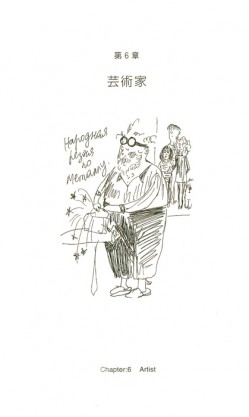 58
58“Artist”
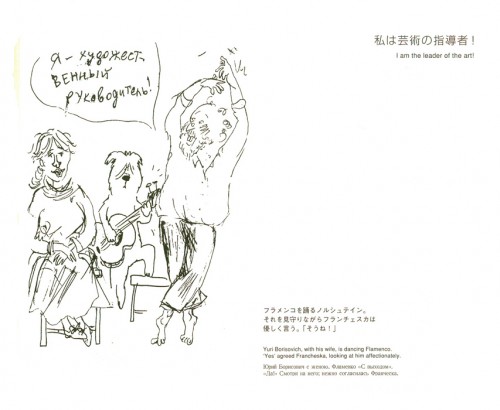 59
59
“I am the leader of the art!”
Yurij Borisovich, with his wife, is dancing Flamenco.
“Yes,” agreed Francheska looking at him affectionately.
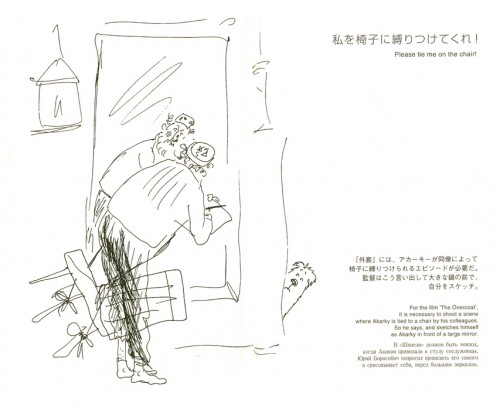 60
60
“Please tie me on the chair!”
For the film, “The Overcoat,” it is necessary to shoot a scene
where Arkaky is tied to a chair by his colleagues.
So he says, and sketches himself as Arkaky in front of a large mirror.
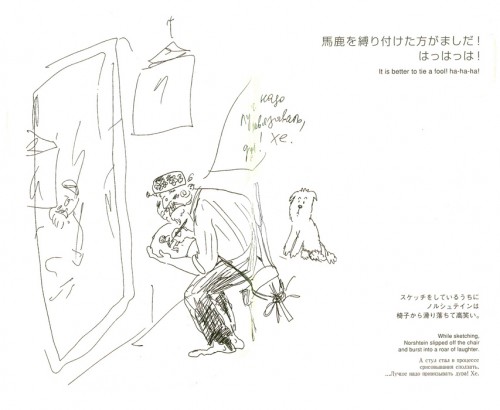 61
61
“It is better to tie a fool! Ha-ha-ha!”
While sketching
Norshtein slipped off the chair
and burst into a roar of laughter.
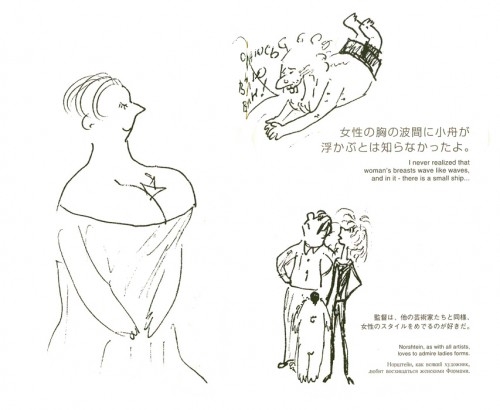 62
62
“I never realized that
woman’s breasts wave like waves,
and in it – there is a small ship!”
Norshtein, as with all artists,
loves to admire ladies forms.
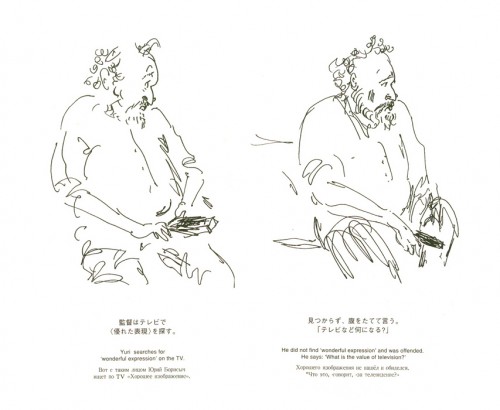 63
63
Yurij searches for
wonderful expression on the TV.
He did not find “wonderful expression” and was offended.
He says: “What is the value of television?”
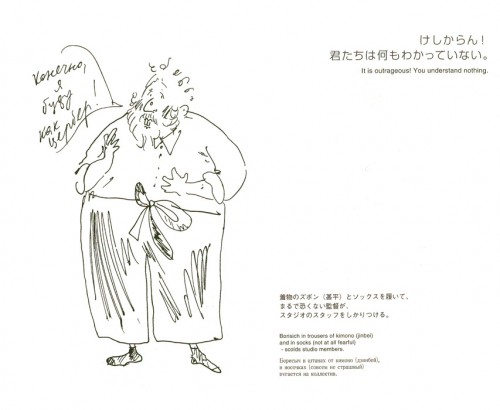 64
64
“It is outrageous! You understand nothing!”
Borisch in trousers of kimono (jinbei)
and in socks (not at all fearful)
scolds studio members.
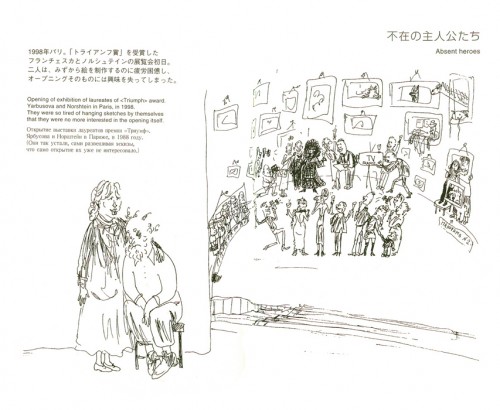 65
65
“Absent heroes.”
Opening of exhibition of laureates of “Triumph” award
Yarbusova and Norshtein in Paris in 1998.
They were so tired of hanging sketches by themselves
that they were no more interested in the opening itself.
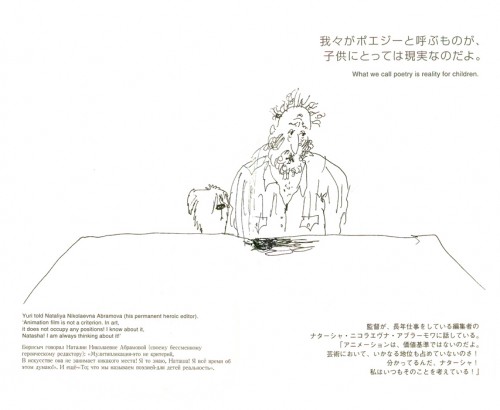 66
66
“What we call poetry is reality for children.”
Yurij told Nataliya Nikolaevna Abramova (his permanent heroic editor)
“Animation film is not a criterion. In art
it does not occupy any positions. I know about it.
Natasha, I am always thinking about it.”
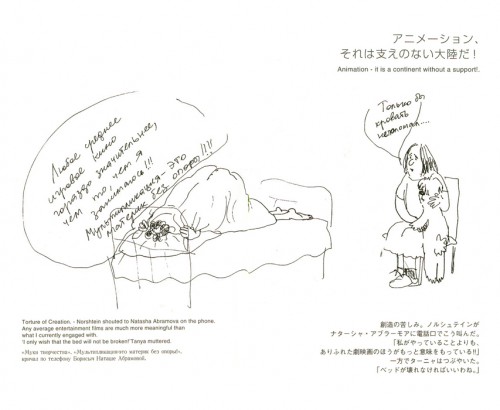 67
67
“Animation – it is a continent without a support!”
Torture of Creation – Norshtein shouted to Natasha Abramova on the phone.
Any average entertainment films are much more meaningful than
what I currently am engaged with.
“I only wish that the bed will not be broken,” Tanya muttered.
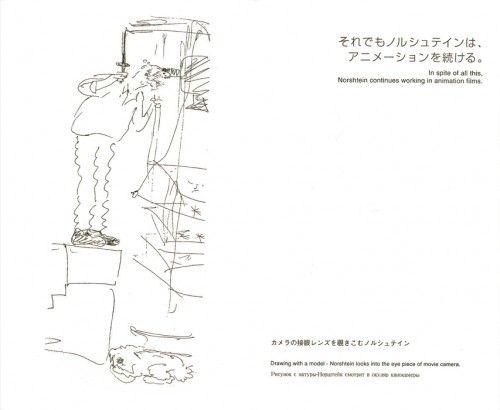 68
68
In spite of all this
Norshtein continues working in animation films.
Drawing with a model – Norshtein looks into the eye piece of movie camera.
Norshtein, himself, wrote a short piece in the back of his student’s book:
- About Tanya
Tatiana Usvayskaya is very unique artist. She has quite rear combination of very keen sense for fun and skill of sharp drawing at the same time. Her visual memory serves her fantastically!
For the very first time I was surprised by her talent seeing her drawing where I was portrayed as a giant with running line of cheering like birds students behind me. Figures on the drawing were not bigger than a finger’s nail, but all that 15 or 20 characters were with incredible resemblance. I can’t understand how she could catch the resemblance in such a miniature size! Any scene from everyday life is transfered by her fantasy.
Her beloved dog with nickname Pirat is a kind of superhero on her drawings. He is a gentleman, a doctor, a cook, her gallant cavalier and her taxi-driver.
Gratefully to her kindness the dog became one of the heros on introduction and ending of TV programme ‘Good night, children!’
A short movie can be done by any of her drawings. She doesn’t keep her drawings preciously. She scatters them everywhere, many of them are lost forever. Whenever I ask about some of her drawings, she answers: ‘I think, I have lost it… I’ll draw a new one!’
She has a Mozart’s scale talent, that’s why so easy she can part with things done already and not be saddened by lost one. For Mozart was quite easier to compose a new piece than to look for something lost already.
Tanya never corrects her drawings. If she has dislike of something, she redraws it again. She doesn’t think much of her talent, considering that to draw is very simple thing.
I hope that publishing of this book with her drawings will help her to understand that to raise a people’s laugh over your drawings is quite tough job.
Yuri Norshtein
Bill Peckmann &Books &Illustration 23 Dec 2009 09:04 am
Vernon Grant’s Santa Claus
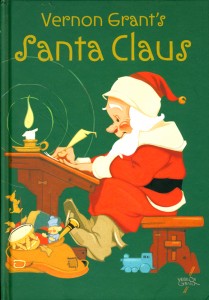 - You’ll remember that I did a couple of pieces on the illustrator Vernon Grant. He was the original designer of Snap, Crackle and Pop for the Kelloggs Corp. back in the late ’30s, and I featured a post on the history of those characters.
- You’ll remember that I did a couple of pieces on the illustrator Vernon Grant. He was the original designer of Snap, Crackle and Pop for the Kelloggs Corp. back in the late ’30s, and I featured a post on the history of those characters.
I followed that with one on his Mother Goose book. There, I posted some of his uniquely styled illustrations for that book of Mother Goose rhymes.
Both those posts were heavily dependent on some great material loaned me by Bill Peckmann from his remarkable collection.
Vernon Grant was also drew Santa Claus. He seemed to love drawing St. Nick in many different incarnations. This is something we share. Whereas I confine myself to many varied Christmas cards, he has a perennial best selling picture book, Vernon Grant’s Santa Claus, that’s been on the market for many years. Bill Peckman recently sent me a copy of the book to scan and post, but I’d already had my own copy. I’ve decided, here, to post about half of the book. I’m particularly interested in Grant’s illustrations prior to the ’50s. Conseqeuntly, I’ve chosen to select only those illustrations that were done in 1953 or earlier, and I’ve placed them in chronological order.
Not all of the images are of Santa Claus. Hence in organizing them by date, we have to start off with a beauty but one that doesn’t feature Santa.
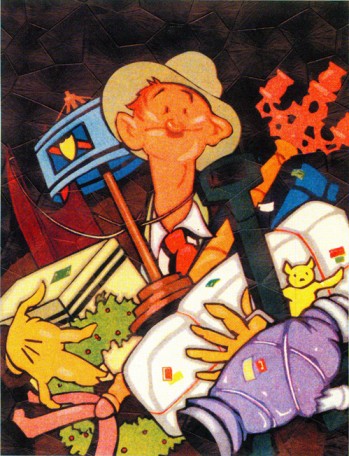
Hi-Ho! For a Merry Christmas – 1932
How sad! The Depression hit Santa, too.
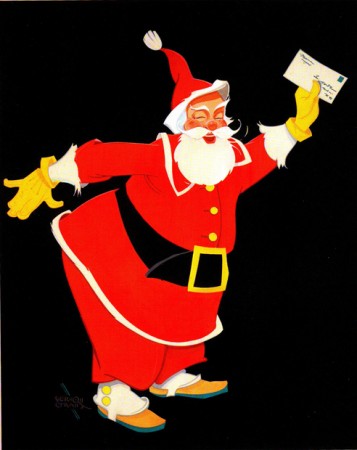
Santa’s Special Delivery – 1940
This one is untitled, but it’s far and away my favorite.
These last two are too Norman Rockwell for my taste.
But it shows the direction Vernon Grant and America were taking.
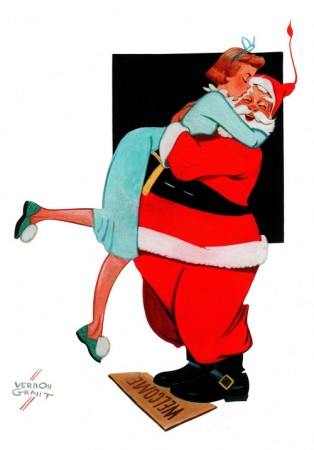
Mommy Kissing Santa Claus – 1953
The song “I Saw Mommy Kissing Santa Claus” written by Tommy Connor
was a smash hit in 1952. The smash singer was Jimmy Boyd (who later
grew into the role of “Jimmy” on the original Mickey Mouse Club.
Vernon Grant obviously built on the song title.
It looks like a Coca Cola ad of the period.
Articles on Animation &Books &Illustration &Norshtein 18 Dec 2009 09:28 am
Norshtein Comics – 5
 - We’re starting to wind down on this delightful book. It’s Tanya Usvayskaya‘s drawn diary while she worked for Yuri Norshtein‘s studio. This book caricartures the small family within the studio and Norshtein’s world during that period.
- We’re starting to wind down on this delightful book. It’s Tanya Usvayskaya‘s drawn diary while she worked for Yuri Norshtein‘s studio. This book caricartures the small family within the studio and Norshtein’s world during that period.
Richard O’connor, whose Asterisk Productions does wonderful animation of their own, gave the book to me as a gift, and I’m pleased to share it with you.
Note that the translation by the Japanese publisher isn’t always the best, but it does capture the gist of the original Russian. I’m transcribing the book without alterations.
The first four parts of the book can be found here:
Norshtein Comics – 1
Norshtein Comics – 2
Norshtein Comics – 3
Norshtein Comics – 4
Here we continue with a chapter on “Pirat,” the studio’s dog:
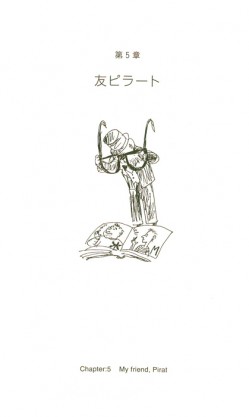 49
49Chapter 5: My Friend, Pirat!
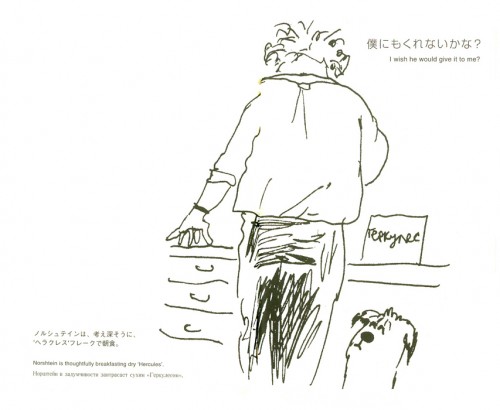 50
50
“Run! Pirat let’s go bathing!”
Spring! On trees are first leaves.
Tanya says “Let’s go to the class. It is Nazarov today!
Norshtein is hurried to a lake,
while Tanya is not.
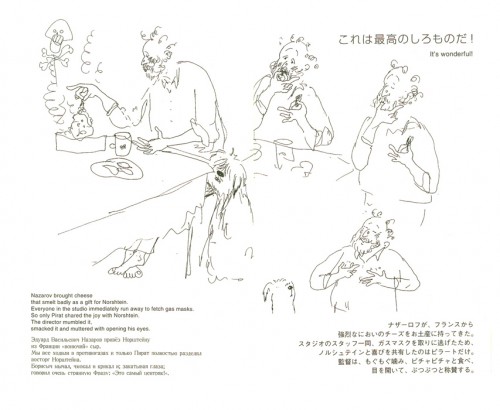 51
51
“I wish he would give it to me.”
Norshtein is thoughtfully breakfasting dry “Hercules.”
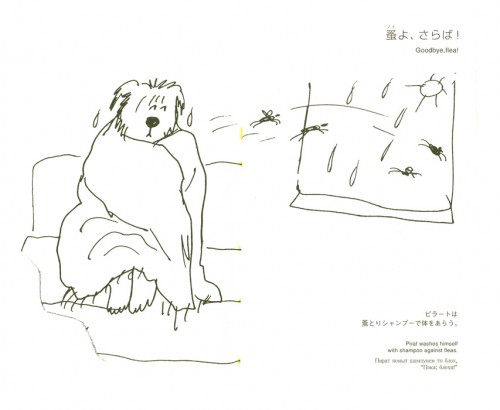 52
52
“It’s wonderful!”
Nazarov brought cheese that smelled badly as a gift for Norshtein.
Everyone in the studio ran away to fetch gas masks.
So only Pirat shared the joy with Norshtein.
The director mumbled it
smacked it and muttered with opening his eyes.
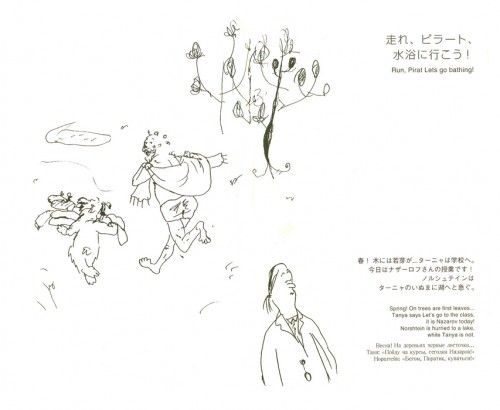 53
53
“Goodbye, flea!”
Pirat washes himself
with shampoo against fleas.
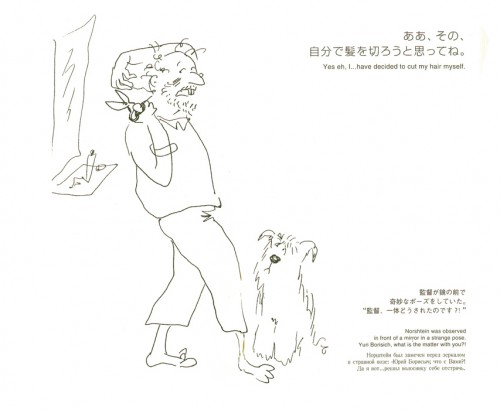 54
54
“Yes, eh, I . . . have decided to cut my hair myself.”
Norshtein was observed in front of a mirror in a strange pose.
“Yuri Borisch, what is the matter with you?”
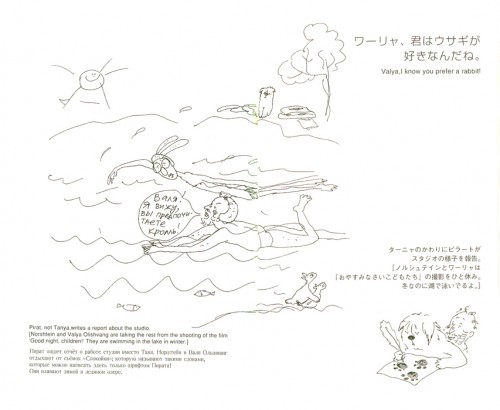 55
55
“Valya, I know you prefer a rabbit.”
Pirat, not Tanya, writes a report about the studio.
[Norshtein and Valya Olishvang are taking the rest from shooting the film.
Good night, children. They are swimming on the lake in the winter.]
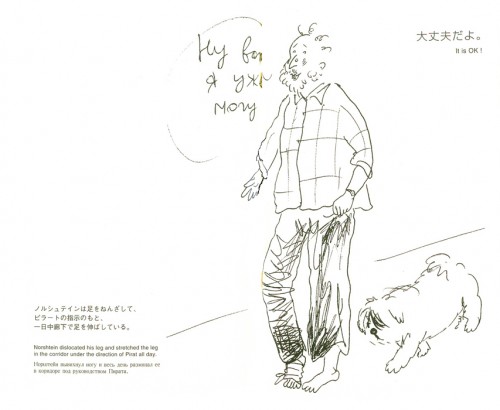 56
56
“It is OK !”
Norshtein dislocated his leg and stretched the leg
in the corridor under the direction of Pirat all day.
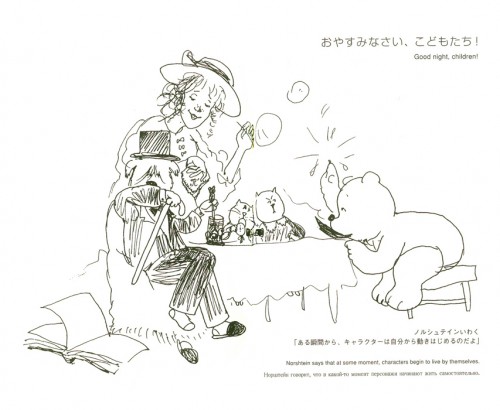 57
57
“Good night, children !”
Norshtein says that at some moment,
characters start to live by themselves.
Bill Peckmann &Books &Illustration &Rowland B. Wilson 17 Dec 2009 08:59 am
Bedtime for Robert – 3
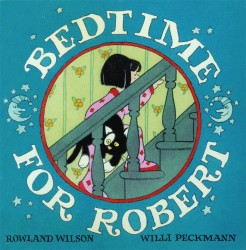 - For the past two weeks I’ve been posting the dummy of a book written and prepared by Bill Peckmann and Rowland B. Wilson. It didn’t find a publisher back in the 1980s when they were seeking one, but the book survives. And it’s a gem.
- For the past two weeks I’ve been posting the dummy of a book written and prepared by Bill Peckmann and Rowland B. Wilson. It didn’t find a publisher back in the 1980s when they were seeking one, but the book survives. And it’s a gem.
The first couple of pages were done in a color, as a sample, and the remaining were left as line drawings. The beautiful artwork of Rowland Wilson reads as clean and sharp as ever. This wordless book rips at a breakneck speed and tells a real animated story that would have made for a wonderful children’s book. Imagine a child sitting on a parent’s lap and the dialogue they could have had in developing this graphic story. (It also would have made a great animated short!)
I’ve really enjoyed posting this, and I thank Bill Peckmann for allowing me the opportunity of doing so. You can see Part 1 here.
You can see Part 2 here.
As with the past post, we start with the last drawing of Part 2.
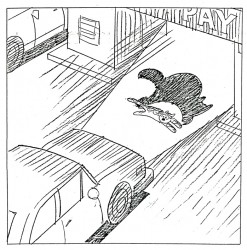 66
66 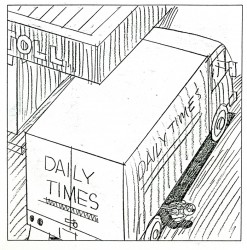 67
67(Click any image to enlarge.)
And just to put everything in proper perspective, here’s a letter they received from Houghton Mifflin rejecting the book. He was Rowland B. Wilson, for god’s sake!
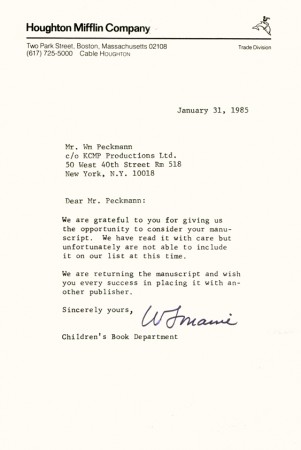
Bill Peckmann added this background info: “The rejection slip from
Houghton Mifflen really hurt the most because our thinking at the time
was that since they were publishing Bill Peet’s books (my all time
favorites), we thought they would understand the concept of “Robert”
better than anyone else. Go figure”
Books &Comic Art &Norshtein 12 Dec 2009 08:50 am
Norshtein Comics – 4
 - Back to the book. Here’s the next chapter in Tanya Usvayskaya‘s wonderful book. She kept a drawn diary while working for Yuri Norshtein at his studio. This book compiles the drawings of the small family within the studio and Norshtein’s environs during that period.
- Back to the book. Here’s the next chapter in Tanya Usvayskaya‘s wonderful book. She kept a drawn diary while working for Yuri Norshtein at his studio. This book compiles the drawings of the small family within the studio and Norshtein’s environs during that period.
A copy of this book was a gift from Richard O’connor, whose Asterisk Productions does wonderful animation of their own. What a treasure!
Note that the translation by the Japanese publisher isn’t always the best, but it does capture the gist of the original Russian. I’m transcribing the book without alterations.
The first three parts of the book can be found here:
Norshtein Comics – 1
Norshtein Comics – 2
Norshtein Comics – 3
This chapter, Norshtein and Tanya, is one of the shortest.
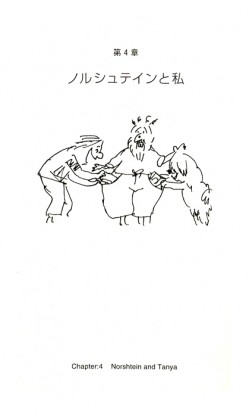 4-1
4-1“Norstein and Tanya”
.
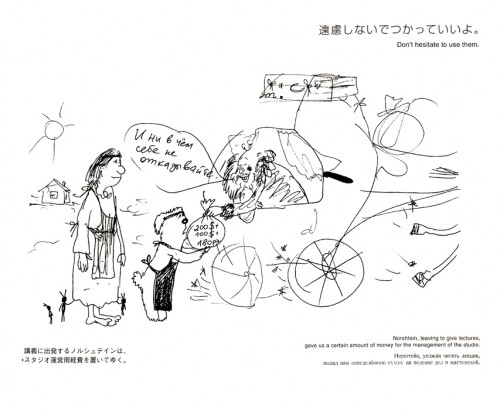 4-2
4-2“Don’t Hesitate to use them.”
Norshtein, leaving to give lectures, gave us a
certain amount of money for the management of the studio.
.
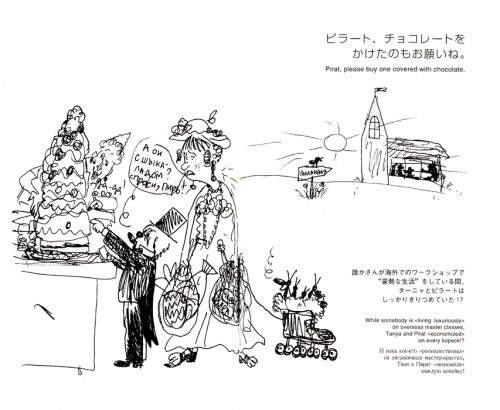 4-3
4-3“Pirat, please buy one covered with chocolate.”
While someone is “living luxuriously” on overseas master classes,
Tanya and Pirat “economized” on every kopeck.
.
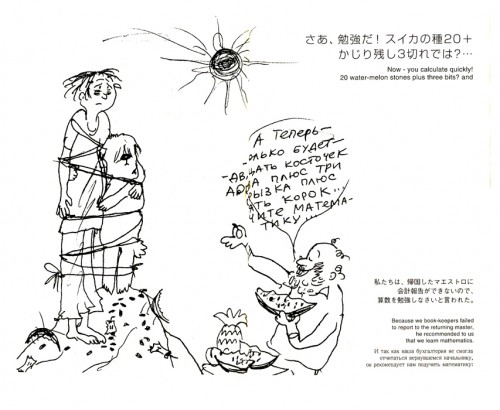 4-4
4-4“Now – you calculate quickly!
20 watermelon stones plus 3 bits? and . . .”
Because we bookkeepers failed to report to the master,
he recommended to us that we learn mathematics.
.
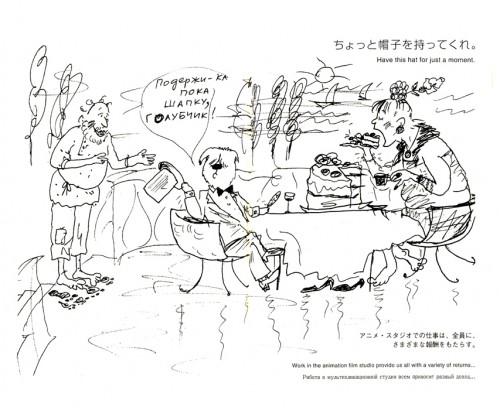 4-5
4-5“Have this hat for just a moment.”
Work in the animation film studio provides us all
with a variety of returns.
.
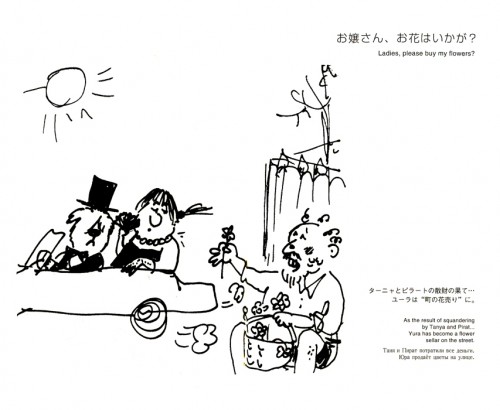 4-6
4-6“Ladies, please buy my flowers.”
As a result of squandering by Tanya and Pirat,
Yuri has become a flower seller on the street.
.
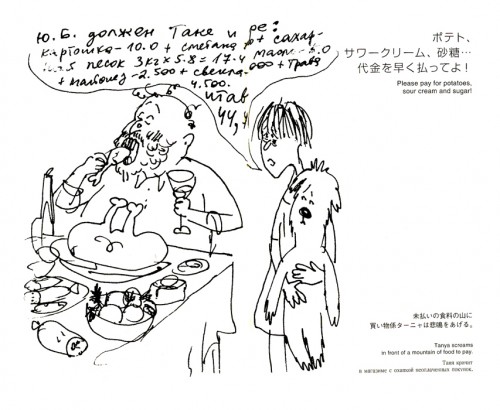 4-7
4-7“Please pay for potatoes, sour cream and sugar!”
Tanya screams in front of a mountain of food to pay.
.
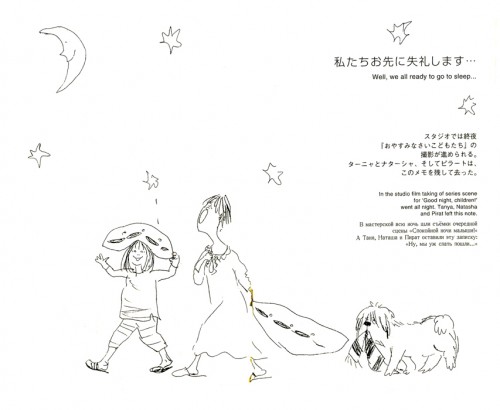 4-8
4-8“Well, we all are ready to go to sleep.”
In the studio, taking of scene for “Good Night, Children!”
went all night. Tanya, Natasha and Pirat left this note.
________________________
Here’s the video of the title scene mentioned in the last cartoon, “Good Night, Children!”. Thanks to Niffiwan for adding it to YouTube.
Bill Peckmann &Books &Illustration &Rowland B. Wilson 11 Dec 2009 09:06 am
Bedtime for Robert – 2
 - Today we continue with this magnificent, yet unpublished, book that was written by Bill Peckmann and illustrated by the late, great Rowland B. Wilson. The book almost reads like a dialogue-less storyboard.
- Today we continue with this magnificent, yet unpublished, book that was written by Bill Peckmann and illustrated by the late, great Rowland B. Wilson. The book almost reads like a dialogue-less storyboard.
Posted the way it is, the piece moves with all the speed of fast paced cartoon of the forties, and is drawn and composed with as much grace.
This is a treat to post, and I thank Bill Peckmann for the chance to do so. You can see Part 1 here.
I begin this entry with the last image from the last post.
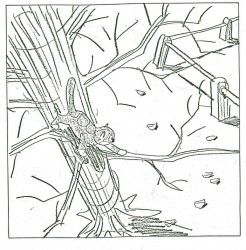 28
28 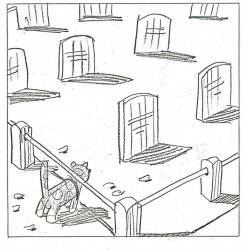 29
29(Click any image to enlarge.)
One more part to come, next week.
Books &Norshtein 04 Dec 2009 08:39 am
Norshtein Comics – 3
 - It’s Friday, so it’s time to read the next chapter in the delightful book by Tanya Usvayskaya. She recorded her stay at Yuri Norshtein’s studio by caricaturing her boss and his life during that period. The simple drawings say a lot.
- It’s Friday, so it’s time to read the next chapter in the delightful book by Tanya Usvayskaya. She recorded her stay at Yuri Norshtein’s studio by caricaturing her boss and his life during that period. The simple drawings say a lot.
This book was gifted me by Richard O’connor, whose Asterisk Productions does some charming animation of their own. I am enormously grateful for that surprise package of a book.
Note that the translation, sometimes poorly worded, is copied verbatim. I’m just trying to transcribe the book without any alterations.
The first two parts of the book can be found here:
Norshtein Comics – 1
Norshtein Comics – 2
This chapter concerns itself with biographical notes of the master’s life.
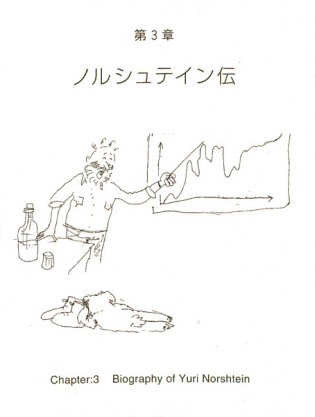 1
1(Click any image to enlarge.)
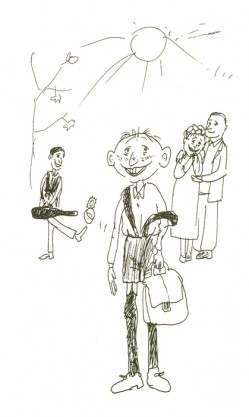 2
2
“Childhood”
Red haired with freckles and in stockings – boy grew up cheerful.
Made mama Bassya and papa Boris happy and almost he never
quarrelled with his brother – violinist Garik.
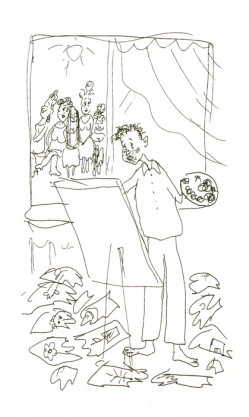 3
3
“Adolescence”
As a lad, he was soon captured by one passion – just painting!
Drew, torn to pieces and thrown out.
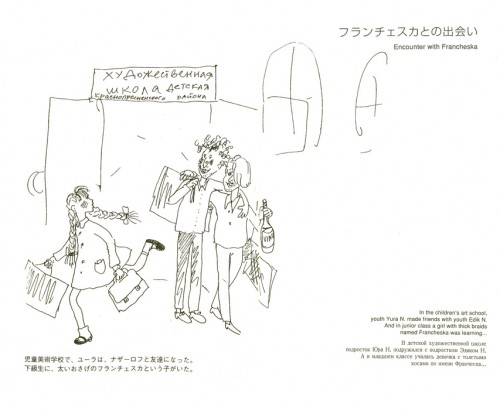 4
4
“Encounter with Francheska”
In the children’s art school.
youth Yuri N. made friends with youth Edik N.
And in junior class a girl with thick braids
named Francheska was learning . . .
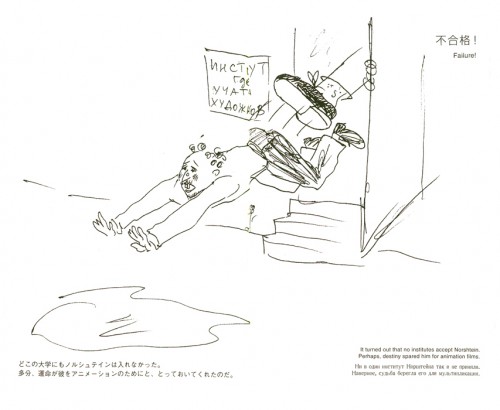 5
5
Failure!
It turned out that no institutes accept Norshtein.
Perhaps, destinyspared him for animation films.
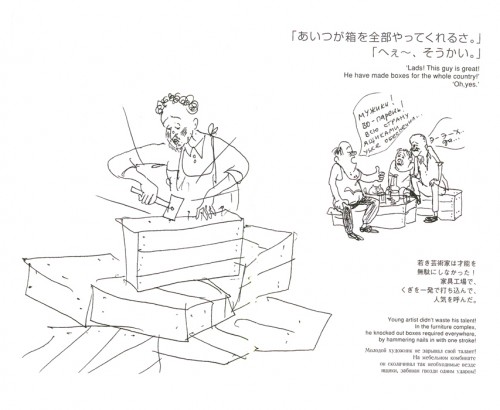 6
6
“Lads! This guy is great!
He made boxes for the whole country!”
“Oh, yes.”
Young artist didn’t waste his talent!
in the furniture complex
he knocked out boxes required everywhere
by hammering nails in with one stroke!
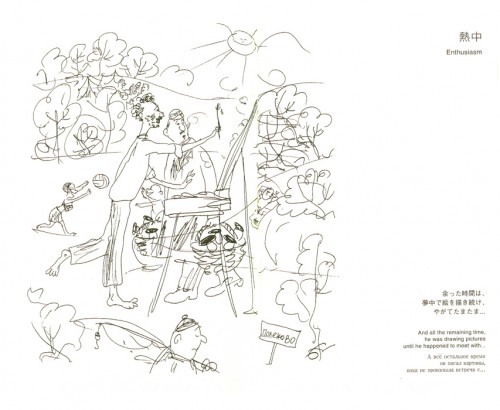 7
7
“Enthusiasm”
And all the remaining time
he was drawing pictures
until he happened to meet with . . .
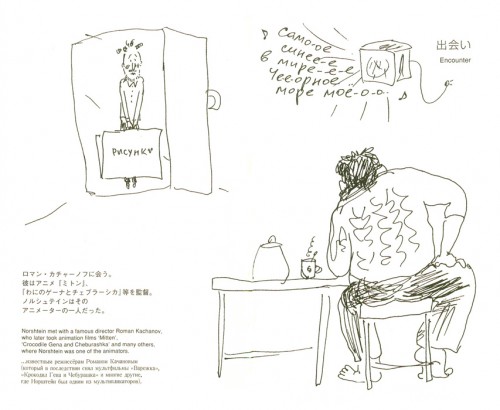 8
8
“Encounter”
Norshtein met with a famous director, Roman Kachanov,
who later took (made) animation film “Mitten”,
“Crocodile Gena and Cheburashka” and many others,
where Norshtein was one of the animators.
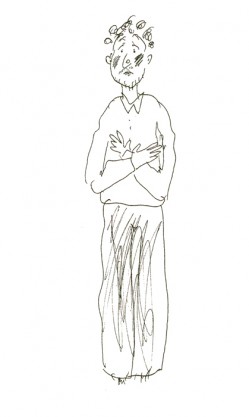 9
9
“On the road to becoming an animator.”
(Without believing his own luck . . .)
With the blessing of Kachanov, Norshtein successfully passed
an examination and entered the artists, animator’s class!
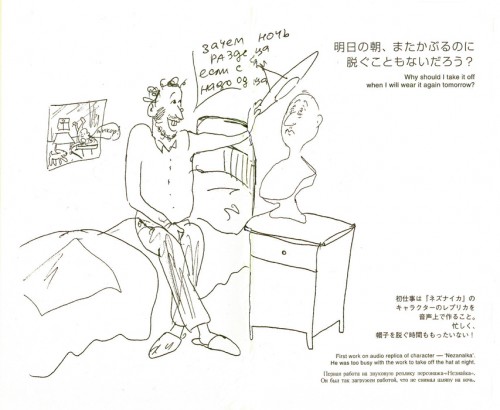 10
10
“Why should I take it off
when I will wear it again tomorrow?”
First work on audio replica of character – “Nezanaika”.
He was too busy with the work to take off the hat at night.
Bill Peckmann &Books &Illustration &Rowland B. Wilson 03 Dec 2009 07:37 am
Bedtime for Robert – 1
- Bill Peckmann collaborated with Rowland Wilson, back in the early ’80s, on a charming little book for children that never found a publisher and, consequently, never was completed. Bill had a bound copy of the book – in a mockup form – and sent it to me. I, naturally, would like to share it.
So here’s the first part. There are about 90 pages, so it’ll probably take three posts to complete them all.
First, here’s the note on the inner sleeve of the cover:
- ABOUT BEDTIME FOR ROBERT, A WORDLESS BOOK
Bedtime for Robert is intended to bring to small children an early experience of the special personal relationship one has to a book; the availability and flexibility that a book enjoys over a fixed-time medium such as television.
Being wordless, the book needs no translation. The child has access to it at any time without relying on adults. This early exposure to the physical reality of books will, we believe, enhance the experience of reading later on.
The story combines the pull of a narrative with information that appeals to a child’s curiosity: in this case what goes on at night in the adult world. Although the child must go to bed (reluctantly), Robert the cat’s curiosity leads him into this forbidden adult world. Robert is all cat with cat qualities, not a little person in a cat suit as most cartoon cats are. The child can project his own emotions into the character.
The authors are booklovers with extensive experience in both print and film. We have both won Emrnys and other awards for our animation designs for educational TV.
We believe this is the first book to utilize the principles of film continuity in a printed form. This continuity is vital to the understanding of a narrative without the aid of words.
The use of film pacing supports the unfolding of adventure and humor in a wordless story.
The book is planned to be in color. The pages up to 17 are in finished linework and the rest is in rough layout form.
Robert is conceived as a series. The character and structure would remain constant. The variables would be in the cat’s adventures in various places, seasons, times of the day, and occupations.
Please contact either of us at the addresses below. This is a simultaneous submission.
Yours truly,
Rowland Wilson
Willi Peckmann
Here, then, are the first 20 or so pages. You’ll see immediately how original this book is:

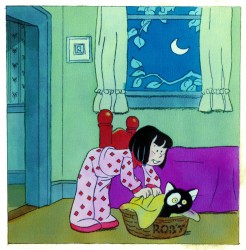 3
3(Click any image to enlarge.)
Rowland was so brilliant with color; it would have been wonderful if he’d been able to complete the book. At least we have this much.
Many thanks to Bill Peckmann, again, for sharing this gem.
Books &SpornFilms 26 Nov 2009 08:54 am
Thanksgiving Jigsaw
- Here’s a short film I’d like to share, about a minute long. It’s a piece we did back in 1990 for Live Home Video and was part of a two-video project of nonsense poems. One tape contained poems by anonymous authors – Mother Goose and the like. The other tape contained poems by noted writers.
Russell Hoban is one of my favorite writers, so there are four of his poems included in the half-hour show. This was written by him and narrated by a young, non-actor girl who had a great voice. I’d worked with her previously on The Red Shoes.
Jason McDonald brilliantly designed and storyboarded the whole thing. He also did all the backgrounds for the two half hour tapes. This poem was animated by Sue Perrotto, who did some marvelous work for us.
Russell Hoban’s
Jigsaw Puzzle
Click left side of the black bar to play.
Right side to watch single frame.
I’ll put up a couple more bits of this show in the upcoming weeks.
.
Animation &Books &Commentary 25 Nov 2009 09:07 am
Conflicts
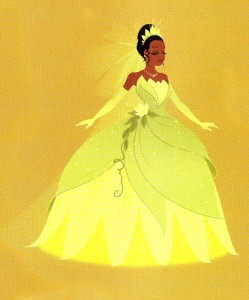 - Today’s the day that The Princess and the Frog opens in two million theaters. It’s being called 2D animation’s last best chance of survival. Of course, that’s ridiculous; I don’t accept it for a minute. Just as I didn’t accept it when Eisner at Disney or Katzenberg at Dreamworks proclaimed 2D animation dead, several years ago.
- Today’s the day that The Princess and the Frog opens in two million theaters. It’s being called 2D animation’s last best chance of survival. Of course, that’s ridiculous; I don’t accept it for a minute. Just as I didn’t accept it when Eisner at Disney or Katzenberg at Dreamworks proclaimed 2D animation dead, several years ago.
But I’m conflicted.
Certainly, I want it to do well – extremely well; I’d like it to make the road easier for the next non-Winnie-the-Pooh feature at Disney. But I don’t think that this is going to be the best of the recent features – cgi, stop-motion OR hand drawn. I’m sure there’ll be a couple of tour de force animation sequences. Yet, there’s not much pulling me to any of those 2 million theaters.** I just don’t have the highest of expectations. Looking at the “Art” in the book, The Art of The Princess and the Frog didn’t warm me toward the film, either. There aren’t many pictures in the book that remotely represent “Art” to me.
Yet, I am looking forward to seeing it. Because it IS 2D animation drawn by some of the most acclaimed animators in the industry. I am anxious for them and want it to supersede my trepidations and be a positive for animation. The truth is that I don’t know what I’m going to see, and I want it to be better than the trailers and books promoting this film.
When I saw all the advance bits and pieces of The Fantastic Mr. Fox, I hated what I saw. I could imagine only negatives. The more I saw, however, the more I was being won over by the voice cast. When I saw the film, I loved it. I mean, I LOVED it. I’m looking forward to seeing it again . . . and again. Wes Anderson pulled together a brilliant film full of charm and wit and intelligence. It not only was one of my favorite animated films of the year, it was one of my favorite films . . . period.
Perhaps, that’s what’s in store for me with The Princess and the Frog. Perhaps the animators will overwhelm me, the directors will have a new vision, the artists will get to me. Perhaps, I’ll see everything I hope for. But I’ll have to wait.
I was set to see a screening on Dec 1st. But I can’t. There’s another more important event that evening. (Anytime live people are involved it wins hands-down over a filmed event.)
There’s the celebration at the Paley center of Mr. Magoo’s Christmas Carol, complete with a panel consisting of Darrell Van Citters, Animator and Author of Mister Magoo’s Christmas Carol: The Making of the First Animated Christmas Special, Judy Levitow, Daughter of Magoo Director Abe Levitow and Marie Matthews, Voice of “Young Scroogeâ€. I’ll be at the Paley Center.
I’ve arranged to see The Princess and the Frog on Dec. 5th. That’s Walt’s birthday, so it seemed appropriate. It’s two weeks after the opening, but I’ll manage. Or if not, I’ll do like everyone else and pay to see the film. The problem is that I’ve been seeing about five films a week (it’s Academy screening time), and sticking another one in there is difficult. We’ll see. Consequently, if I do give honest comments on this film (not that anyone is waiting) it’ll have to hold until then.
** Jerry Beck in the comment section wrote: that the film opens in “one or two theatres today in NY and LA. It opens in “two million theatres†on December 11th.” My mistake.
Regardless, the film got reviewed today. The race issue presented problems for some:
- Manohla Dargis’ NYTimes: Not quite glowing, she says the “. . . finale, like the story itself, represents progress of a kind, I suppose, even if this princess spends an uncommonly long time splashing around as a frog. A frog whose green hue suggests that, if nothing else, Disney finally recognizes that every little girl, no matter her color, represents a new marketing opportunity.”
The NYDaily News: (3 stars)”The good news is that “P&F” quickly cruises past the fact that Tiana is Disney’s first African-American heroine. Unfortunately, the story that surrounds her often finds itself stuck in the swamp.”
The NYPost
The Village Voice: A not enthusiastic review: “Much ballyhooed as Disney’s return to its tradition of 2-D “cel” animation after a five-year hiatus, The Princess and the Frog is pleasantly, if unmemorably, drawn. But the movie as a whole never approaches the wit, cleverness, and storytelling brio of the studio’s early-1990s animation renaissance . . .”
- Today’s also the day that The Fantastic Mr. Fox opens wide. Prior to this it played only four theaters in the US: two in NY and two in LA. It did exceptionally well at those four theaters; let’s hope it continues at a couple of thousand.
Go see it. That’s all I can say. This is a great film. Go see it.
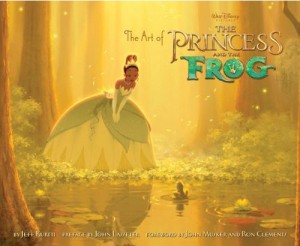 - Let’s back up a bit and talk about that book – The Art of The Princess and the Frog. This is only one of about 16 books Disney’s releasing on the film. I’ve read that they’ve been very successful with any merchandise featuring Princess Tiana. Everything from the Little Golden Book to a cookbook. The one that intrigues me most is the Learn to Draw The Princess and the Frog. (In the past, they would have called it “How to draw . . .”)
- Let’s back up a bit and talk about that book – The Art of The Princess and the Frog. This is only one of about 16 books Disney’s releasing on the film. I’ve read that they’ve been very successful with any merchandise featuring Princess Tiana. Everything from the Little Golden Book to a cookbook. The one that intrigues me most is the Learn to Draw The Princess and the Frog. (In the past, they would have called it “How to draw . . .”)
But back to the one Chronicle sent me hoping for a review. I’ve been a fan of Chronicle’s animation books. Amid Amidi‘s exceptionally well designed book, Cartoon Modern, was the first book of theirs that grabbed my attention. It did what other Art/Animation books should have imitated. Amid’s follow-up, The Art of Pixar Short Films was equally attractive, though I didn’t have much interest in the subject.
The book, The Art of the Princess and the Frog is also well designed, graphically, but the material is, for me, less than thrilling. I’m not sure I am in tune with writer, Jeff Kurtti‘s approach to structuring the book.
The book, itself, seems less about animation than about how to display the artwork offered. It breaks chapters into characters or settings and gives lots of models, storyboards and Bg examples. It makes for a very different format in the book and makes for a new way of organizing the material.

There are plenty of storyboard selections to view.
This sequence by Jeremy Spears.
There are a lot of quotes from many of the principal artists and animators involved, and the book plays out from those quotes. There are a lot of characters analyzed in the book, so I’m curious to see how they play in the film and how much screen time any of them get.
The end result, for me, is that there doesn’t seem to be a strong focus in the book. I’m not sure what I should be looking for. Is it just a big scrapbook of artwork promoting the film? Or is there a larger focus that I missed? But then I get the feeling that the film is a mish-mash of styles, itself. The book doesn’t help in this regard, but, of course, it’s a gathering of a lot of preliminary art, so it’s hard to tell.
Given the large number of art books on the subject of various animated films, I suppose there have to be other models for the “Artwork of . . .” series, but I’m not sure this is it.
There are some interesting bits about the film that were stated. For example, the chapter on Background design illustrates how the artists looked closely at Lady and the Tramp for “inspiration”. Here’s a breakdown in two illustrations that the book uses to discuss this inspiration.
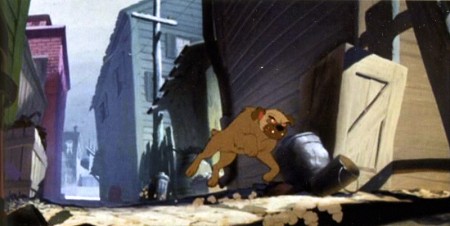
“. . . We looked at Lady and the Tramp not so much for the “application
of paint,” but definitely the caricature of shapes, and the compositional
elements. Large foreground elements utilizing the screen shape, and then
space of depth, and pattern, and a nice balance and rhythm of light shapes.”
.
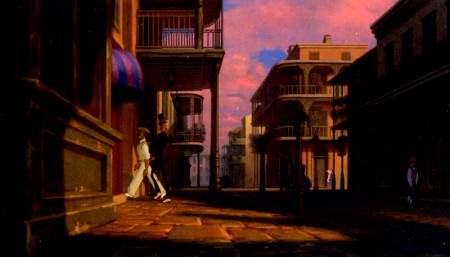
I wonder what Disney film the Art Directors of Lady and the Tramp
studied when they were preparing to design their film?
.

The Lady and the Tramp Bg as it appears in
Bob Thomas’ The Art of Animation.
.

Bg for The Princess and the Frog by James Aaron Finch..
Should this be an inspiration for me or for future animation artists? The Thomas book was a model for me; for years I studied, memorized and pored over every picture of that book. I wonder how I would react to this if I were young and looking for something to keep me enthralled with the medium.
We need to redefine the art of “The Art of . . .” books. They have to be more than a promotional device> Throw enough pretty pictures at the audience and you’ll make enough sales to cover cost and bring people to the theaters. Some creativity might be required.
Here are a few of them.
.

Two illustrations by James Aaron Finch. .”
.

Something lost. Something gained?.”
.
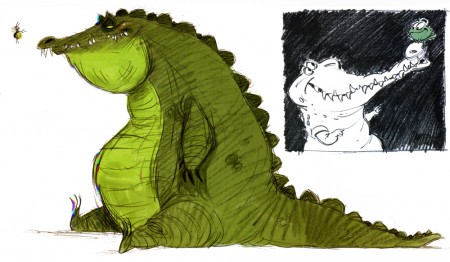
Bill Schwab on the left | Rik Maki on the right
.
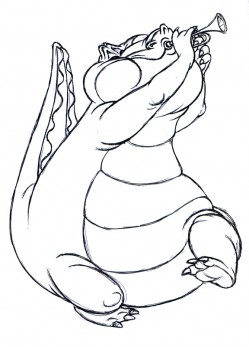
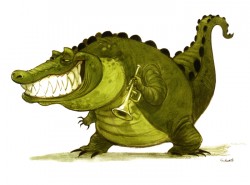
Eric Goldberg on the left | Bill Schwab on the right
.

Bg by Doug Reggers. There are a lot of steamships in the book.
